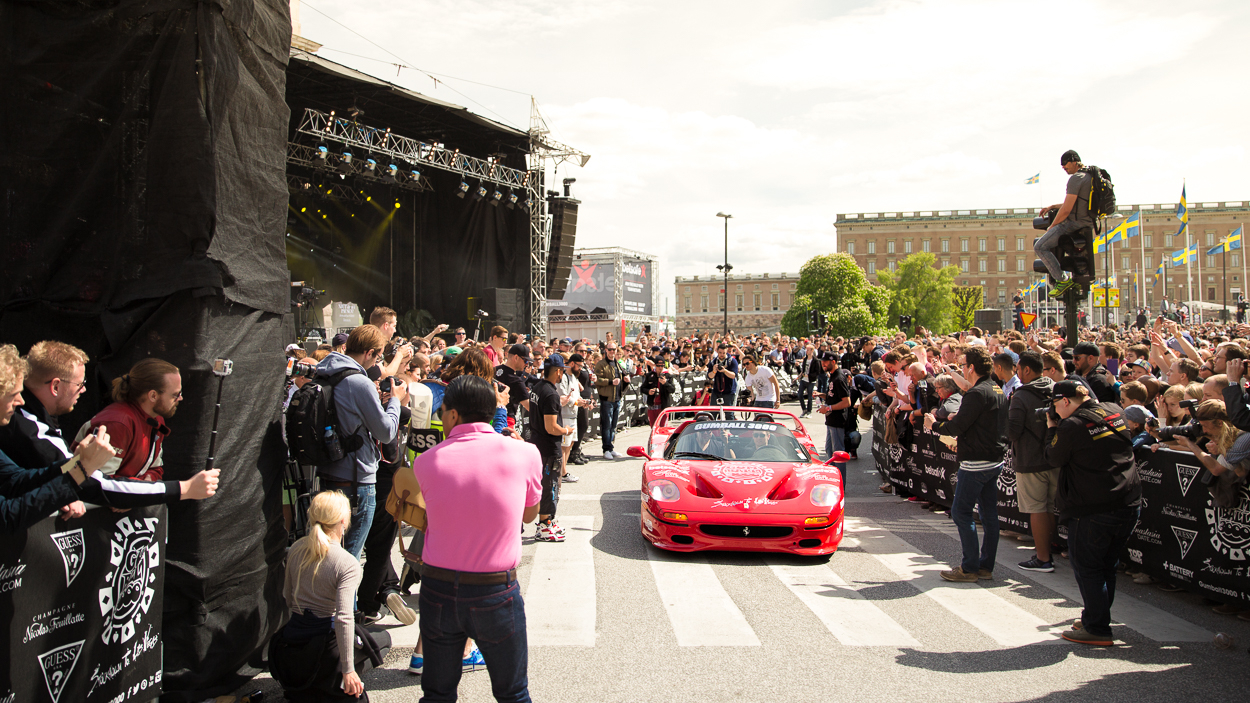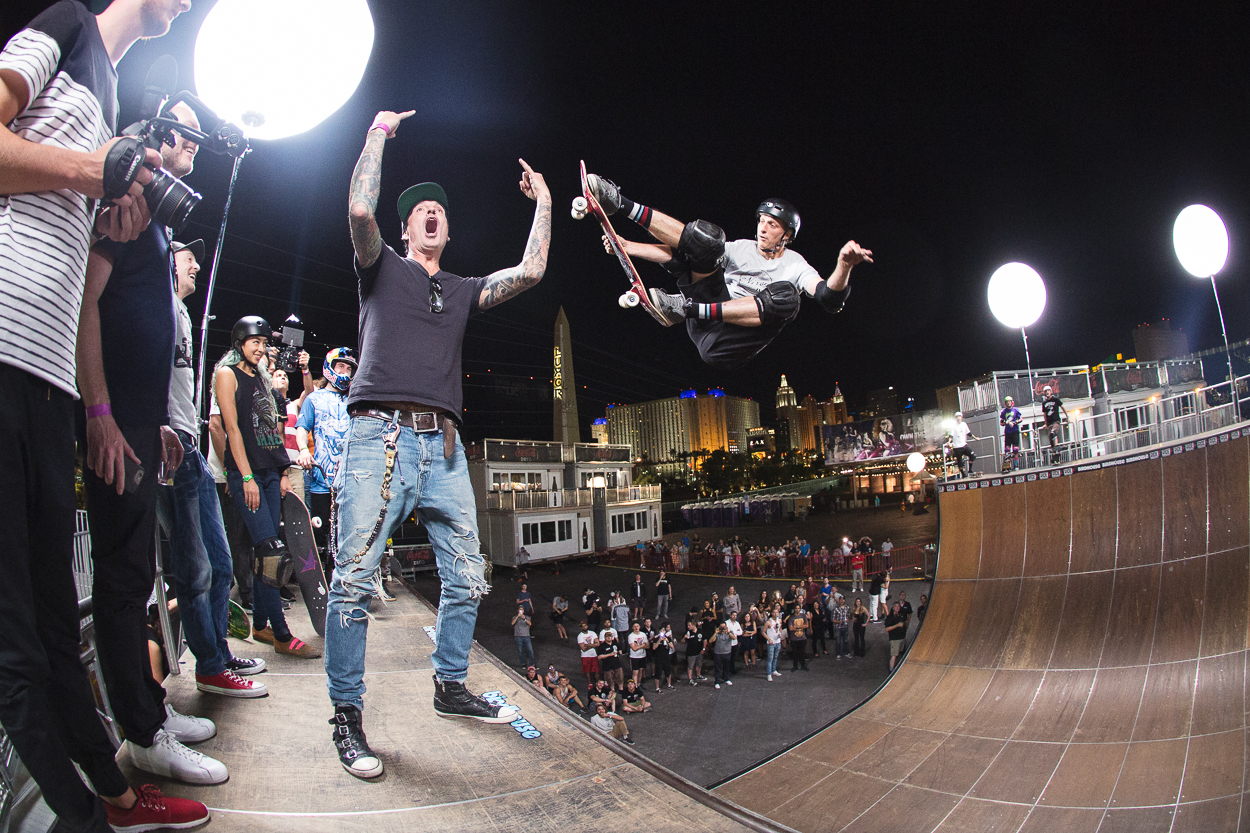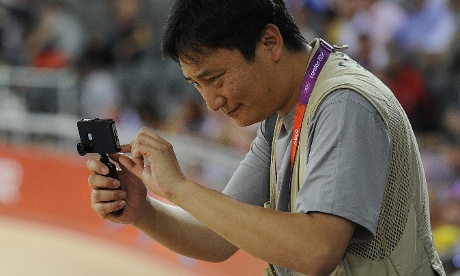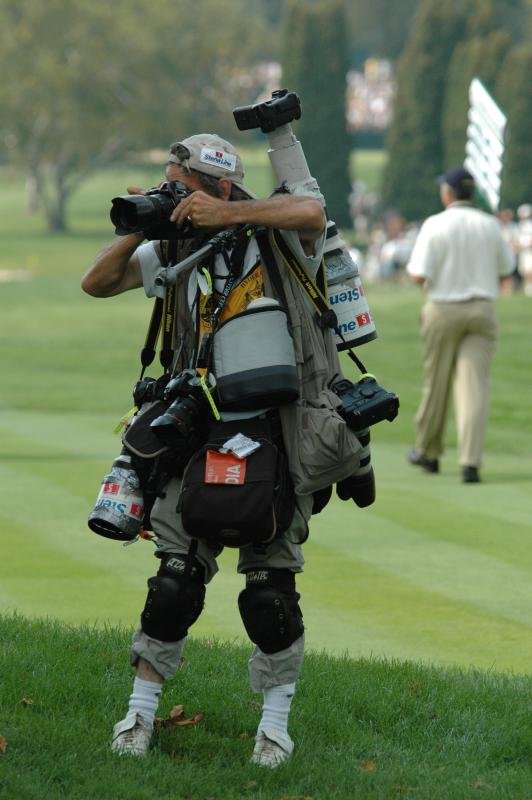There are quite a few features snuck away inside Adobe #Lightroom, here are some that I think you may not know. Hope you enjoy the video. Thanks, Sam Subscribe: http://bit.ly/SMPhotoYT Website: http://www.sammoores.com Instagram: http://www.instagram.com/sammooresphoto Facebook: http://www.fb.com/sammooresphotography
Tutorial
What Camera Should I Buy? (Updated 2019)
in Tutorial
Every now and then a friend of mine or someone on social media fires across the message "Hey Sam, I'm looking to get a new camera, what should I buy?". Now like most open ended questions there is a suitably open ended answer. I am a firm believer that a camera is a tool for creating photos rather than some bit of wizardry with a feature hidden inside to create outstanding perfect photos. With this now in mind you need to narrow down your parameters to something more tangible than "a camera" so the first question I usually ask is what are you looking to do with this camera.
What do you want to do with it?
As you start looking at different camera (and later lenses) you need to consider what kind of demands you are going to place on it. For example someone that is shooting pictures of friends on holiday in the sun is going to have very different (and significantly cheaper) requirements than a pro shooting sports indoors in the dark.
Criteria To Consider:
Daytime or night shooting - Are the majority of your photos going to be in bright daylight or do you want to be able to shoot in a church for example without flash?
Speed - Do you want to shoot sports with lots of moving action and want a camera that sounds like a machine gun?
Insert stupid camera nerd video...
Size and weight - Are you happy carrying around the sort of thing you see on sports photographers or would you rather slip your camera into your shorts and be on your way?
Price:
Once you've considered the above the next thing to consider is budget. Now my experience over the years has been with DSLRs and in the last 2 years with Sony Mirrorless so that is what my knowledge base is built around. As I stated earlier I think of cameras as tools and base them solely on their ability to perform tasks up to the required standard. If you are looking at point and shoots everything is included in the one price whereas if you have the ability to change lenses this is where things get complicated. I would always suggest spending money on good glass (what we photographers call lenses). Lenses will last you a loooong time whereas you might upgrade the camera body over time. I have owned some lenses through 3 or so body upgrades. Something that is worth noting is you are never “stuck” with your current camera system. I would try and avoid swapping but when I sold my Canon gear I got really quite a lot of money back towards the new stuff (I keep an excel document with the details of when I bought and sold to keep track of what is expensive to run).
The Big Two…Or 3…Or 4
When I first wrote this guide there was only Canon vs Nikon. I don’t think anyone can argue anymore that Sony has joined and probably overtaken these two in popularity. One of the first things I would consider is what your friends shoot with. If you have a mate who has a bunch of gear you can ask them how to do x,y,z or borrow lenses etc. Definitely something to consider and an avenue I guide my own family and friends down. Other than that pretty much everyone makes a good camera these days so it’s about finding what’s right for you.
Tell Me About Sony
Sony are very much the "trendy" brand at the moment (apart from Leica but they've always been cool so not really a trend..) and they have shaken up the market quite a bit. When I made my switch a year and a half ago I really felt they had got to the point where the mirrorless options were just “Better” than the DSLR options. My Sony A9 is half the size of the Canon equivalent and is packed with way more features. I’ll never forget sitting having lunch with a couple of people (one using a 1DX) and he freaked out when I pulled a usb pack out of my bag and just started charging my camera. It’s a simple feature but invaluable in my books. I’m forever in search of smaller, better, more efficient gear and now I can charge my camera from the usb port in a car! I now fully recommend Sony cameras to everyone that asks. There are some cases when they aren’t the right fit but overall I think they can provide great value and features.
Toughness:
Something that I used to think about a lot, which was a major benefit of my Canon gear was how tough it was. You really could throw that stuff around and it just kept working. The Sony seems reasonably tough but I’m not sure it can take quite so much abuse.
Wear and tear..
Sensor Size - Sensor size is something you might hear photographers talking about. Personally for me sensor size trumps megapixels every single time.
Sensor diagram from Wikipedia
The sensor in a digital camera is basically the "film" that captures the light and processes it. In the diagram above you can see the difference between a "Full Frame" 35mm DSLR or Mirrorless (like the Sony A7 Series) and a point and shoot like the Canon IXUS 740 HS which has a sensor very similar in size to the 1/2.5" box. When manufacturers start talking about Megapixels they are saying your camera has x number of million pixels crammed into the sensor. A small sensor is going to have a harder time dealing with this than the same amount of data spread over a larger surface. Basically I have one rule, get the biggest sensor you can that still fits all the other requirements.
Conclusions:
So after talking about cameras for a bit and probably not actually helping you distinguish between diddly squat I've got some recommendations in different categories.
Point and Shoot Cameras:
I love the Sony RX100 cameras because they are jam packed with all the fun features and Sony generally tries to fit large sensors into smaller bodies and prices range from £299 for the Mk i up to £800 for the latest greatest (Mk VI)(As you go up you are paying for more incrementally better lenses but mainly for the video functions like 4k in the top camera) Link below:
Bridge Cameras:
At the moment I don't really recommend bridge cameras because if you look at the sensor sizes available vs everything else you are more likely to be better off with a DSLR and a decent all round lens for similar money and much better image quality. There are definitely some good cameras in this bracket though.
Mirrorless Cameras:
This class of camera has come on leaps and bounds in the last few years, mainly spearheaded by Sony cramming it's massive sensors into the tinniest bodies it can imagine and then updating them at a serious rate of knots (Canon and Nikon are finally realising this is the way forward!). These cameras come right off the bat with features like wifi for sending pictures to your phone for social media (or a quick backup as I recently used on holiday) and controlling all the features right from your palm. The lens selection is ever growing and these chaps are still small enough to not be an effort to lug around. My first pick is the Sony A7iii which jams a full frame sensor and 5-axis stabilisation (helps removes camera shake) into a very small package for £1500 (not cheap but the quality is very high for a small camera). You can get the earlier model (A7ii) for much cheaper which retains a lot of the features but has a smaller batter and no joystick. Depending on your budget Fuji make some great cameras that can be cheaper, I very much liked using the X-E3 I tried out a few months back.
DSLR:
Honestly I don’t think the future is DSLR anymore, all of the major manufacturers are moving onto mirrorless and I believe it’s where we are headed.
Price: Around £500
In this price bracket you have to be a bit careful as you are going to be sacrificing something. The first thing to suffer at this price is the lenses as good zoom lenses are a bit more expensive. What you are able to do is pick up a good prime lens (has a fixed focal length (no zoom) but kicks the arse of the standard kit lens you get with the cheaper cameras and is great for portraits if you stand a little back.) You can pick up a Sony A6300 on ebay for about £400 with the 16-50mm lens (good for landscapes and people photos). Due to these cameras being "Crop" sensor bodies you get a multiplication factor if you put a normal "full frame" lens on them. This means that putting a 50mm f1.8 lens (£180 on ebay) comes out at roughly 80mm which is great for portraits and a bit more zoom along with allowing you to throw the background out of focus. This comes out to around £580.
Price: Around £1000
Once your budget goes up a bit more I would immediately suggest picking up the Sony E 18-200mm. For about £450 you get a lens that will fit pretty much all your needs (I wack this on a camera when i go skiing). It goes from pretty wide to zoomed and has stabilisation to help you hand hold shots at slower shutter speeds. Depending on whether you are getting your camera new or second hand you could combine it with a new a6000 (£473) or a second hand a6300 to come out at £900. If you are considering DSLRs Canon do a similar 18-200 but i’m not quite sure what body you would pare that with. A second hand 7dmkii would be great but seem prehistoric in comparison to the a6300.
Price: Around £1500
The only thing I would change at this price point is upgrade the body to the new A6500 which comes with a leap in focusing ability, in body stabilisation and the ability to shoot faster. I would still use the same zoom until you find you need something more specific. Something to consider at this price point might be going full frame instead. You can pick up an A7 for £850 and the Sony 24-70 F4 for a total of £1600 which would be good going forward. I’d definitely look at getting a clean looking (with box etc) higher up model from Ebay though.
Price: £2k+
In this price bracket for Sony I would go straight for the A7iii, it’s jam packed with the latest features and honestly makes me wonder sometimes why I sprung for the A9. You have now stepped up to a full frame camera body and because of this you can't use the previously stated zoom any more. You can get the A7iii Mkiii with a 28-70 lens for £1860 which will look after most of your needs but after that it get's expensive pretty quickly. Once you’ve shot quite a bit you might consider adding a prime or a different zoom.
And the rest..
Depending on how serious your photography is going to be after this point you will be looking at multiple zoom lenses that let in lots of light and give you that out of focus background that everyone loves (you can get this with primes for much cheaper but lose the flexibility). My staples are the Sony 24-70mm f2.8 (the lower the number f the more blurry you can make the background and the darker the environment you can shoot in) and the 70-200mm f2.8, I will not go anywhere without them.
To Finish
I realise I have listed a lot of Sony gear but this is what I’ve chosen to use personally and feel is the best at the moment. If you feel like you align with another brand better (Fuji maybe) then hopefully you can see my thought process through the budgeting and lens choices. You can then apply this to all cameras you are considering. I definitely recommend looking for bargains second hand but you have to be a bit more careful. Cameras are like cars in that they lose a chunk of value initially but that slows down over time. Lenses by main brands such as Canon have historically held their value very well (better than Sony but I think that is improving). It makes the maths easier if you think of potential resale values down the line. An example would be my Canon 24-70 f2.8. Bought for £1429 in 2013 and sold for £1066 in 2018 which doesn’t seem that bad.
Euroabia Group Shot Post Production
Putting together this sort of photo is a bit of a logistical nightmare. Getting together all the keys from the owners is step one then you have to painstakingly move each car into the correct position. You'd be surprised how many times we walked up to an aventador to move it to find we had the key for a different one. Once everything was positioned tho it was then just the long process of trying to light everything.
This was my first exposure. The Camera was mounted on a tripod sitting on the roof of our luggage van.
As you can see in the above photo there was a massive shadow created by spot light behind the van. This was ruining my base exposure so I took my softbox on a monopod and just held it up to cover the light. This allowed me to get an even background exposure.
Insert handy friend to run around where I said and light the cars.
Now you can see the sped up video of me bringing everything together in photoshop. It is critical that your camera does not move in this process as you then have to minutely align the layers rather than just stacking them on top (using the lighten blend mode) of each other.

























